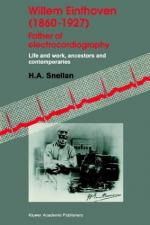|
This section contains 306 words (approx. 2 pages at 300 words per page) |
World of Invention on Willem Einthoven
Willem Einthoven was born in Java, Dutch East Indies (now Indonesia). When he was six years old, his father, Jacob, (a physician) died and, in 1870, the widowed Louise de Vogel Einthoven returned with her six children to Utrecht, The Netherlands. Einthoven studied medicine at the University of Utrecht and earned his medical degree cum laude in 1885. Later that year he was appointed professor of physiology at the University of Leiden in Holland, a post he held for the rest of his life. An interest in physics as well as physiology soon led Einthoven into a study of the electrical impulses produced by movement of the heart muscle. Since existing instruments were inadequate for measuring and recording these electric currents, Einthoven set about inventing a sufficiently sensitive device for this purpose. The result was the string galvanometer of 1903, which used a fine quartz wire that reacted to changes in cardiac currents. Einthoven called his invention the electrocardiograph, and the recordings of heart rhythms it made electrocardiograms. Using the machine, Einthoven identified the normal heart-current waves and set the standards for interpretation of electrocardiograms. He also pioneered the diagnosis of different types of heart disease and irregularity through electrocardiography. In recognition of the profound importance of the electrocardiograph in the diagnosis of heart ailments, Einthoven was awarded the Nobel Prize in medicine or physiology in 1924. Einthoven was an open, humorous, and generous man who often invited scientists to work with him. He was elected a foreign member of the Royal Society of London, and he traveled and lectured widely in both Europe and in the United States. In his last major experiment, conducted with his son, Willem, Einthoven received radiotelegrams from Java using a string galvanometer. His final work, a treatise on the action current of the heart, was published posthumously. Einthoven died in Leiden in 1927.
|
This section contains 306 words (approx. 2 pages at 300 words per page) |


